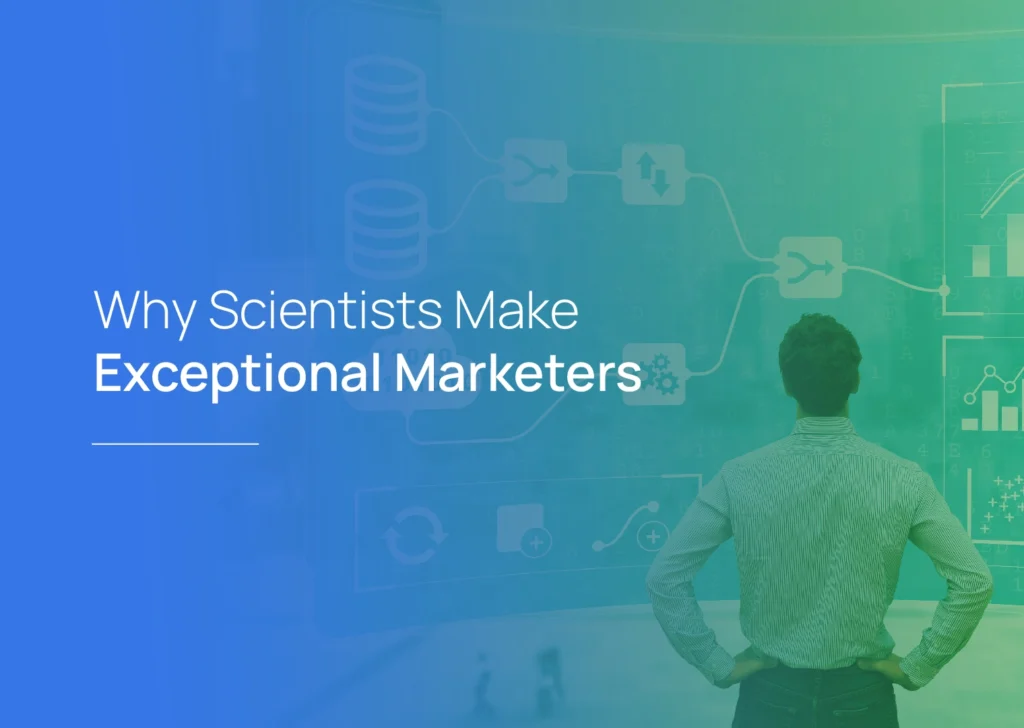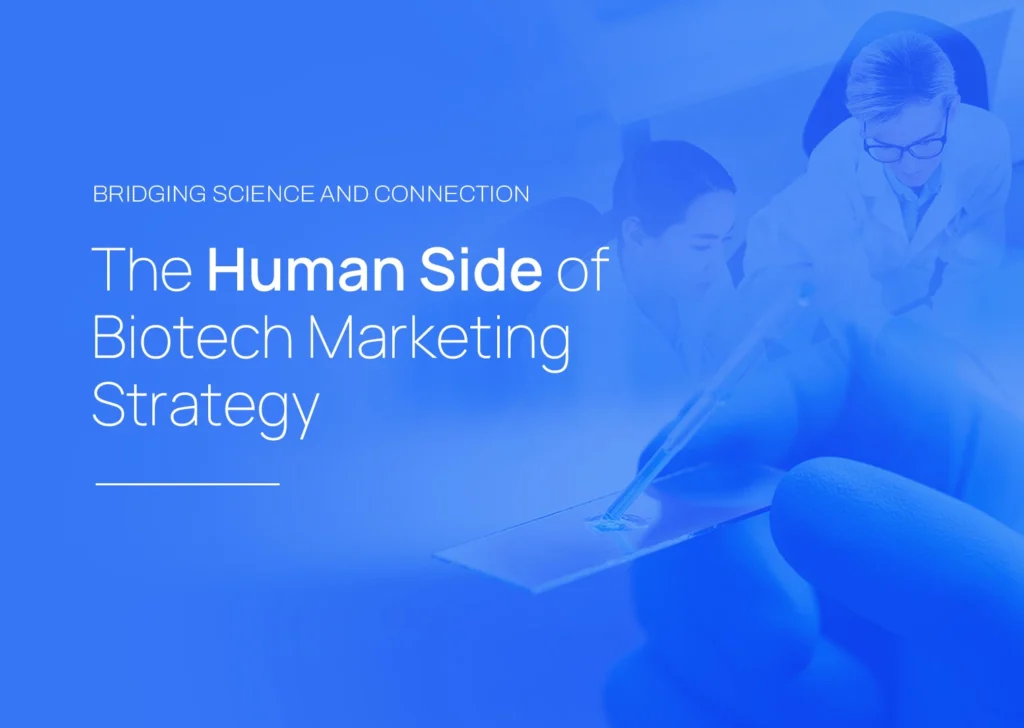Highlights:
- Explore the importance of lead sourcing in biotech B2B marketing with an overview of various lead sourcing methods, including popular AI database services and more traditional manual methods.
- Compare lead-sourcing database services like ZoomInfo and Apollo with manual methods like website research and in-person outreach to uncover the pros and cons of each while deciding which combination of methods is best for your organization.
- Discover the best practices for effective lead sourcing in biotech, like the importance of defining your ideal customer profile and ensuring data accuracy and compliance.
- Consider the future of lead sourcing in the marketplace and how partnering with Samba Scientific can help optimize your digital marketing strategies.
Lead Sourcing in Biotech Marketing: What it is & Why it Matters
For biotech marketers, effective lead generation often comes down to one crucial factor: your ability to connect with the right decision-makers at the right time. This is where lead sourcing comes into play.
As a cornerstone of successful B2B marketing in the biotech sector, lead sourcing is the process of defining and acquiring potential customers or clients for your business. An efficient lead sourcing strategy can make the difference between a thriving pipeline and a stagnant sales funnel.
We understand the unique challenges faced by biotech companies in identifying and engaging potential clients. In this comprehensive guide, we’ll explore various lead sourcing methods, from cutting-edge database services to tried-and-true manual approaches, helping you craft a tailored strategy that aligns with your specific marketing needs and goals.
Database Services: The Power of AI-Driven Lead Generation
In recent years, AI-powered database services have revolutionized the way biotech companies approach lead sourcing. Let’s take a closer look at some of the most popular options:
- ZoomInfo: Known for its vast B2B contact database, ZoomInfo offers detailed company and contact information, including direct-dial phone numbers and email addresses. Its AI-driven data collection ensures up-to-date information, making it a valuable tool for biotech marketers looking to reach key decision-makers with confidence.

- Apollo: This platform combines a robust database with sales intelligence and engagement tools. Apollo’s strength lies in its ability to provide detailed insights into companies and contacts, helping biotech firms tailor their outreach efforts more effectively.

- Seamless.AI: As the name suggests, Seamless.AI offers a smooth experience in lead generation. Its real-time data verification and AI-powered search capabilities make it particularly useful for biotech companies seeking to identify niche prospects.

- LinkedIn Sales Navigator: While not exclusively a database service, Sales Navigator leverages LinkedIn’s vast professional network to help biotech marketers identify and connect with potential leads based on specific criteria.

Manual Lead Sourcing: The Human Touch in a Digital World
While AI-driven tools offer efficiency and scale, manual lead sourcing methods still play a crucial role in B2B marketing across all industries. These approaches often require a bit more leg work, but they can yield high-quality leads and provide valuable insights that automated systems might miss. Manual methods include:
- Website Research: Carefully analyzing potential clients’ websites can reveal valuable information about their needs, challenges, and decision-makers. By interacting with and experiencing their website in real-time, this method allows you to craft highly personalized outreach messages that may appeal to the recipient more naturally.
- LinkedIn Profile Analysis: Beyond Sales Navigator, manually reviewing LinkedIn profiles can uncover nuanced details about potential leads, their interests, and their professional networks. You may uncover insights that contact databases don’t have, and this could make the difference in a prospect’s crowded inbox.
- Industry Events and Conferences: Attending biotech conferences and events provides opportunities for face-to-face networking and lead generation. These interactions often result in high-quality leads with a personal connection.
Comparing Approaches: Finding the Right Balance
Both database services and manual methods have their strengths and limitations when it comes to effective and efficient lead sourcing. Database services offer:
- Scalability and efficiency
- Access to a wide range of contacts
- Time-saving automation like auto-generated outreach emails
However, they may struggle with:
- Data accuracy and freshness
- Lack of personalized insights
- Potential for over-reliance on automation
Manual methods, on the other hand, provide:
- Highly personalized insights
- Opportunity for relationship building
- Quality over quantity in lead generation
But they can be challenging due to:
- Time-intensive nature
- Limited scalability
- Potential for human error
The ideal approach often involves a combination of both methods. For instance, using database services for initial lead identification and then applying manual research to refine and personalize your outreach can yield excellent results.
Best Practices for Effective Lead Sourcing in Biotech
- Define Your Ideal Customer Profile (ICP): Before diving into lead sourcing, clearly define your target audience. This process includes identifying their interests and business needs while comparing those to your organization’s products and services to find the best matches. In the biotech sector, your ICP might include specific roles like laboratory directors, clinical research managers, or C-suite executives in pharmaceutical companies.
- Balance Quantity and Quality: While it’s tempting to focus on generating a high volume of leads, you should prioritize quality. In biotech, where sales cycles can be long and complex, investing time in high-potential leads often yields better results.
- Ensure Data Accuracy and Compliance: Given the sensitive nature of the biotech industry, it’s crucial to maintain data accuracy and comply with regulations like GDPR. Regularly update your lead information and respect opt-out requests.
- Leverage Industry-Specific Knowledge: Use your understanding of the biotech sector to identify potential pain points and tailor your outreach accordingly. This industry-specific approach can significantly improve your lead generation efforts.
- Refine Your Approach as You Go: Regularly analyze the performance of your lead sourcing strategies and be prepared to adjust your process based on results.
The Future of Lead Sourcing in Biotech
As technology continues to evolve, we can expect even more sophisticated lead-sourcing tools tailored to the biotech industry. However, the fundamental principles of effective B2B marketing – understanding your audience, providing value, and building relationships – will remain crucial.
At Samba Scientific, we specialize in helping biotech companies navigate the complex world of B2B marketing and lead generation. Our team of experts combines cutting-edge tools with industry-specific knowledge to create tailored lead sourcing strategies that drive results.
Ready to take your biotech lead generation to the next level? Contact us today to learn how we can help you identify and engage with the right decision-makers in your target market.
By leveraging the power of both AI-driven database services and strategic manual methods, you can create a robust lead sourcing strategy that positions your biotech company for success in an increasingly competitive market.








